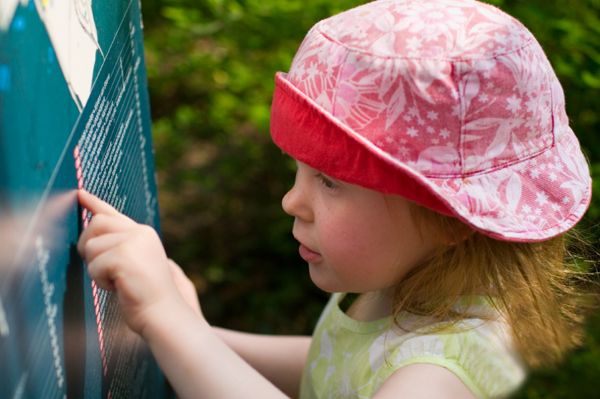Research has shown that a child's phonemic awareness
(ability to hear and manipulate sounds within a word) is a very good indicator
of that child's future reading success or struggle. So, how do we build phonemic awareness in
children, including very young children?
- Rhyming--read rhyming poems and stories, emphasizing the rhyming words. Leave a rhyming word out and have the child fill in a word that works.
- Blending--putting individual sounds together to make words. For example, "/b/, /a/, /t/ says what?" Then change it, "what if we use a /c/ instead of /b/?" In addition to individual sounds, you can also blend and change groups of sounds; "/h/, /op/ says what? What if you change /op/ to /at/?"
- Segmenting--segmenting is the opposite of blending; the child tells you all of the sounds they hear in a word. "What sounds do you hear in 'stop'?"
- Isolating sounds--matching words with the same beginning, middle or ending sounds. Sort pictures; play "Beginning Sound Concentration"--find pictures with matching sounds; play "I Spy"--"I spy something that starts with /w/."
- Identifying and sequencing sounds--first, identify sounds in isolation. This part can be done in the classroom or on a "sound walk". "What was that sound you just heard?" (crumpling paper, clapping, sliding a chair, etc.) Once children learn to identify different sounds pretty well, you can start sequencing the sounds and see if the children can tell you what sound they heard first, next and last. Or, give them three sounds, then do it again, leaving one sound out. See if the children can identify which sound was left out.
- Deleting sounds--leaving one sound or part of a word out and seeing what word remains. "Say the word 'toothbrush'. Now say 'toothbrush' without saying 'tooth'." The child should respond "brush". "Say the word 'train'. Now say 'train' without saying 't'." The child should respond "rain".
Anything that we can do to help child develop phonemic
awareness will help them in their reading, regardless of whether they are
currently learning to read or still a few years away.
Misty
Image courtesy of www.FreeDigitalPhotos.net




